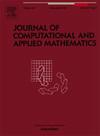基于群体的离散设施选址算法,对候选地点进行排序
IF 2.1
2区 数学
Q1 MATHEMATICS, APPLIED
Journal of Computational and Applied Mathematics
Pub Date : 2024-10-09
DOI:10.1016/j.cam.2024.116304
引用次数: 0
摘要
设施选址问题是一种数学优化问题,涉及在给定的地理区域内寻找设施(如工厂、仓库、商店)的最佳位置,为客户提供服务。其目标通常是最小化成本、最大化效率或优化其他目标。设施选址问题可能在多个方面存在差异,包括客户行为规则、搜索空间类型以及对新设施选址的限制。这些变化直接影响到问题的复杂性,以及解决问题的适当解决方法。本研究的重点是新进入企业的离散竞争设施选址问题,这是新企业进入现有市场的一个重要场景。其目标是在考虑现有竞争对手的情况下,战略性地确定新设施的位置,以实现利润最大化。我们开发了一种新的随机搜索启发式算法,用于逼近企业扩张中离散竞争设施选址问题的最优解。该算法对其前身进行了扩展,根据过去创建新解决方案的有用性和无用性,对新设施的潜在位置进行排序。新算法使用群体来处理和重复使用迄今为止发现的最佳解决方案,并采用新策略对潜在地点进行排序,同时考虑到群体中解决方案的特征。通过使用真实地理数据为一家新进入的公司解决竞争性设施选址问题,对所设计的算法进行了研究。本文章由计算机程序翻译,如有差异,请以英文原文为准。
Population-based algorithm for discrete facility location with ranking of candidate locations
Facility location problems are mathematical optimization problems that involve finding the best locations for facilities (e.g., factories, warehouses, stores) to serve customers within a given geographic area. The goal is typically to minimize costs, maximize efficiency, or optimize other objectives. Facility location problems can vary in several ways, including customer behavior rules, the type of search space, and constraints on locations for new facilities being located. These variations directly impact the complexity of the problem and the appropriate solution methods that can be used to tackle the problem. This research is focused on the discrete competitive facility location problem for an entering firm, which is a crucial scenario for new firms entering the existing market. The goal is to strategically locate new facilities to maximize their profit, while considering existing competitors. A new random search heuristic algorithm to approximate the optimal solution for discrete competitive facility location problems for firm expansion has been developed. The algorithm extends its precursor that ranks potential locations for the new facilities depending on their usefulness and uselessness in creating new solutions in the past. The new algorithm uses a population to handle and reuse the best solutions found so far and new strategies for ranking potential locations, considering features of the solutions in the population. The designed algorithm has been investigated by solving competitive facility location problems actual for an entering firms using real geographical data.
求助全文
通过发布文献求助,成功后即可免费获取论文全文。
去求助
来源期刊
CiteScore
5.40
自引率
4.20%
发文量
437
审稿时长
3.0 months
期刊介绍:
The Journal of Computational and Applied Mathematics publishes original papers of high scientific value in all areas of computational and applied mathematics. The main interest of the Journal is in papers that describe and analyze new computational techniques for solving scientific or engineering problems. Also the improved analysis, including the effectiveness and applicability, of existing methods and algorithms is of importance. The computational efficiency (e.g. the convergence, stability, accuracy, ...) should be proved and illustrated by nontrivial numerical examples. Papers describing only variants of existing methods, without adding significant new computational properties are not of interest.
The audience consists of: applied mathematicians, numerical analysts, computational scientists and engineers.

 求助内容:
求助内容: 应助结果提醒方式:
应助结果提醒方式:


